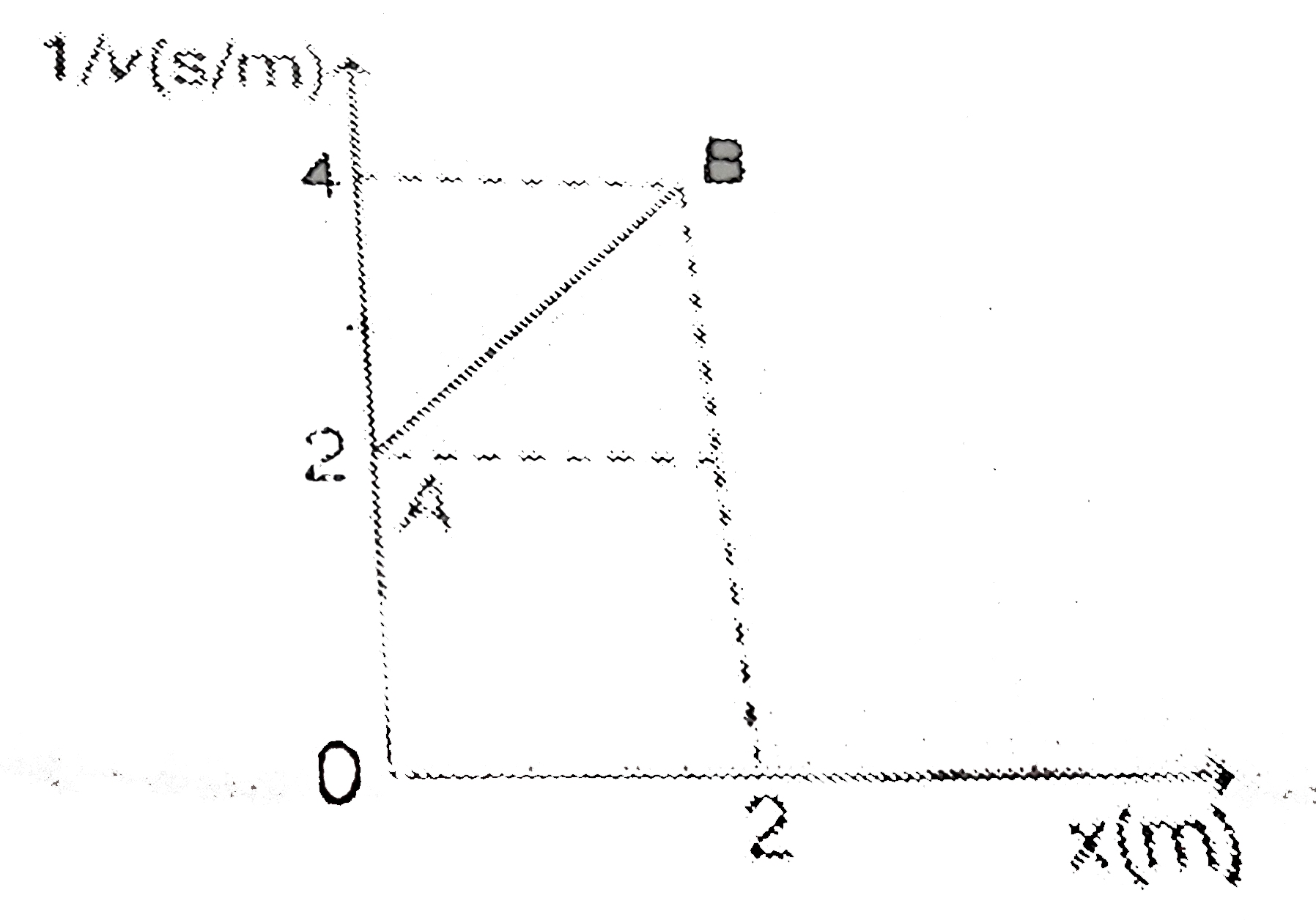Complete Solutions to INTEGER_TYPE of chapter KINEMATICS 1 of Class 11 book with complete answers and questions
| Class 11 | PHYSICS |
| Chapter | KINEMATICS 1 |
| DC PANDEY MASTER PROBLEM PACKAGE | INTEGER_TYPE |
| Number Of Questions | 15 |
| Academic Year | 2023-24 |
A stone is dropped form certain height which can reach the ground in `5s`. If the stone is stopped after `3s` of its fall and then allowed to fall again. Find the time taken (in second) by the stone to reach the ground for the remaining distance.
View SolutionA car starts moving along a line, first with acceleration `a=5m//s^(2)` starting from rest then uniformly and finally decelerating at the same rate till it comes to rest. The total of motion is `25s`. The average speed during the time is `20m//s`. The particle moves uniformly for `(2.5x)` second. Find the value of `x`.
View SolutionTwo particles P and Q simultaneously start moving from point A with velocities `15 m//s` and `20 m//s` respectively. The two particles move with acceleration equal in magnitude but opposite in direction. When P overtakes Q at point B then its velocity is `30 m//s`, the velocity of Q at point B will be
View SolutionIf a particle takes `t` second less and acquire a velocity of `vms^(-1)` more in falling through the same disance on two planets where the accelerations due to gravity are `2g` and `8g` respectively, then `v=xgt`. Find value of `x`
View SolutionSpeed time graph of two cars `A` and `B` approaching towards each other is shown in figure. Initial distance between them is `60m`. The two cars will cross each other after `t` secons. Find value of it `t`.

View SolutionThe acceleration-time graph of a particle moving along a straight line is as shown in. At what time the particle acquires its initial velocity?
 .
.
View SolutionA lift performs the first part of its ascent with uniform acceleration a and the remaining with uniform retardation `2a.` If t is the time of ascent, find the depth of the shaft.
View SolutionA small electric car has a maximum constant acceleration of `1m//s^(2)`, a maximum constant deceleration of `2m//s^(2)` and a maximum speed of `20m//s`. The amount of minimum time it would take to drive this car `1km` starting from rest is `(13n)` second. Find value of `n`
View SolutionThe diagram shows the variatioin of `1//v` (where `v` is velocity of the particle) with respect to time. At time `t=3s` using the details given in the graph, find the instantaneous acceleration (in `m//s^(2)`)

View SolutionTwo particles are moving with velocities `v_(1)=hati+thatj+hatk` and `v_(2)=thati+thatj+2hatk m//s` respectively. Time at which they are moving perpendicular to each other is.____________(second)
View SolutionA particle `A` moves with velocity `(2hati-3hatj)m//s` from a point `(4,5m)m`. At the same instant a particle `B`, moving in the same plane with velocity` (4hati+hatj)m//s` passes through a point `C(0,-3)m`. Find the `x`-coordinate (in `m`) of the point where the particles collide.
View SolutionA ball is thrown upwards with a speed of `40m//s`. When the speed becomes half of the initial speed, gravity is switched off for next 2 second. After that gravity is again switched on but magnitude gravity is doubled. The total distance travelled by the ball from `t=0` to the time when the ball reaches the maximum heighth is `55beta`. Find the value of `beta`.
View SolutionFigure shows the velocity time graph for a particle travelling along a straight line. The magnitude of average velocity (in m/s) of particle during the time interval from `t=0` to `t=6s` is `10 alpha`. Find the value of `alpha`.

View SolutionTwo bodies `A` and `B` are moving along `y`-axis and `x` -axis as shown. Find the minimum distance between `A` and `B` is subsequent motion (in `m`)

View SolutionThe `1//v` versus positions graph of a particle is shown in the figure, where `v` is the velocity of the particle. The particle is moving in a straight line aloing positive `x`- axis.Find the time taken by the particle to reach from the point `A` to `B` in second.

View Solution
INTEGER_TYPE questions and complete solutions for chapter KINEMATICS 1 of DC PANDEY PHYSICS (HINGLISH) of Class 11